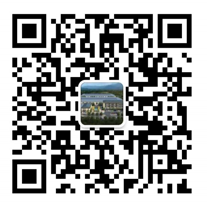Science Popularization - The Influence of Tested Fabric on Tensile Strength

The testing of fabric tensile properties is carried out by giving a sample of a specified size a constant elongation rate, causing it to elongate until it breaks, and recording the maximum tensile force and elongation at break.
1. Fiber raw materials: The variety of fibers determines the strength and stretchability of fabrics, and fabrics made from different raw materials and products with different blending ratios have different strength and stretchability. Fiber products such as polyester, nylon, polypropylene, etc. generally have higher strength; Fiber products such as viscose, wool, and nylon have good extensibility.
2. Latitude and longitude density: With an increase in longitude density, there is an increase in meridional strength (resulting in greater weaving resistance); As the warp density increases, the weft strength increases, and the warp strength decreases (due to an increase in the number of warp openings, stretching, and friction).
3. Organizational specifications: The more times the fabric is interlaced, the higher the strength. Under the same conditions, the tensile strength and elongation of plain weave are greater than those of twill weave, which in turn is greater than satin weave.
4. Yarn structure: The yarn density is high, the fabric has strong tensile strength, and the strength of the yarn fabric is greater than that of the same special yarn fabric (with good dryness and less uneven twisting); When the yarn twist approaches the critical twist, the fabric strength begins to decrease; When the yarn twist direction in the fabric is set to the same twist direction, the fabric has high tensile strength (fibers mesh with each other at the intersection of yarns, resulting in high interweaving resistance).
-
 Email:wanss@kusan-if.com
Email:wanss@kusan-if.com
-
 website:www.kusan.cn
website:www.kusan.cn
-
 business address one:No. 3, Futai Road, Lancun Town, Jimo District, Qingdao, Shandong business address two:No. 99, Fengjin Road, Shangma Street, Chengyang District, Qingdao, Shandong
business address one:No. 3, Futai Road, Lancun Town, Jimo District, Qingdao, Shandong business address two:No. 99, Fengjin Road, Shangma Street, Chengyang District, Qingdao, Shandong

Scan the code
Copyright © 2020-2030 www.kusan.cn Qingdao Jiushan Textile fabric Co., Ltd. All Rights Reserved
website:www.kusan.cn address:No. 3, Futai Road, Lancun Town, Jimo District, Qingdao, Shandong ICP Certificate: ICP Lu No. 20021986-1

 简体中文
简体中文 Japanese
Japanese 한국어
한국어
